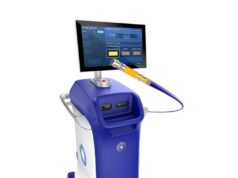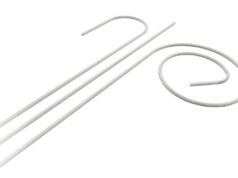
Douglas Packer, Mayo Clinic, Rochester, USA, says that his proudest moments in medicine came at the time of finishing long and complicated cases or completing innovative research projects. He spoke to Cardiac Rhythm News about his career, family, his presidency of the Heart Rhythm Society, new technologies and the CABANA trial.
When did you decide you wanted a career in medicine? Why cardiology and electrophysiology?
I decided to become a doctor sometime during the seventh or eighth grade. It seems that desire had always been there. I suppose I was strongly influenced by one of the general practitioners in town who was not even my personal physician. Based on those interactions, I found him to be very knowledgeable, if not erudite. He simply seemed to provide an excellent example of the very best in medicine, one worth emulating.
Shortly thereafter, I decided to pursue either cardiology or cardiac surgery. I was enamoured by the heart, simply from looking at the family encyclopaedia that had acetate film layered images of the heart. I also had some exposure to physiology in an early biology class in high school. Early in my internship and residency at Duke University, I decided on cardiac electrophysiology. I would watch Dr John Gallagher round and interacted with him in the management of patients with Wolf Parkinson and White Syndrome or ventricular tachycardia. In electrophysiology, I felt that my own personal interests came together. When I was in high school, I worked at the family car dealership in the service department. My area of interest and expertise was the electrical systems of the car. In college, I majored in chemistry, but was most interested in physical chemistry in general, and quantum mechanics in specific. Medical school was a bit disappointing because of the rote memorisation aspects of it. It was exposure to electrophysiology, however, that brought back all of the interest from my younger years and college. I was sold on the study of arrhythmias from that point on.
Who has inspired you in your career and what advice of theirs do you remember today?
I have been fortunate during my career to have had excellent mentors. In medical school, one of my mentors was Dr Maxwell Wintrobe who rounded with us on our hospital service. Dr George Cartwright similarly took an interest in my career in internal medicine. At Duke, one of my early role models was Dr Eugene Stead, while another mentor was James B Wynegarten. In cardiac electrophysiology, I had the good fortune of training with Dr John Gallagher and later did a “post doc” training period with Eric Prystowsky. While each of these individuals is very different, each had a very specific drive to achieve excellence in all that they did.
They took a hard-core academic approach to medicine, and were actually quite demanding. I found that it was a great thrill to be part of great programmes with great mentors. They taught me how to critically analyse critical data and ask the appropriate next questions relevant for either research endeavours or in the treatment of patients with various cardiac diseases.
What have been your proudest professional moments?
I suppose that the very proudest moments came at the time of finishing a long and very complicated case, where it was absolutely unclear at the beginning what the underlying rhythm abnormality was, and where its anatomic origin was, but eventually being successful in treating that abnormality. There is nothing as invigorating as confronting a very complex case in seemingly hopeless patients and coming out with an observation that is critical in the elucidation of the arrhythmia mechanism and its elimination. I have frequently felt the same sense of accomplishment in pursuing research and successfully completing innovative projects. All of the other professional accolades that have come along through time were simply icing on that kind of cake.
Which innovations in cardiac electrophysiology shaped your career?
When I started in cardiac electrophysiology, we used fairly rudimentary recording systems with no more than 8–16 channels captured on magnetic tape and recorded on paper roles. Patients underwent surgery as a definitive treatment of problematic arrhythmias. Over the years, the development of defibrillators and biventricular pacing has been very important. More importantly in shaping my own career has been the development of advanced mapping technologies and ablation capabilities. Personally, the development and application of three-dimensional imaging has had the greatest impact on my practice. The ability to sue three-dimensional images and integrate them in four and five-dimensional mapping displays have been critically important in moving cardiac electrophysiology into its next era.
As president of the Heart Rhythm Society, what have your biggest projects and achievements been?
As president of the Heart Rhythm Society, I have had the opportunity of working closely with great people with great minds. These have been both within the physician contingent, but also the staff and James Youngblood, the CEO of the Heart Rhythm Society. Working together, we have taken a very close look at all of our past operational approaches. This has been based on a nicely crafted strategic plan. The most important projects have been the implementation of the strategic plan and development of ideas using task forces, work groups, and individual teams. We have accomplished much as a group. Most importantly, the Heart Rhythm Society has developed a much more robust research culture, in which clinicians are increasingly active. We have looked forward into the blue sky of the future to push forward science, discovery, and innovation. We are now developing many different projects to better fund our research endeavours and move forward with clinical trial networks. We have also been successful in securing specialty status for cardiac electrophysiology within the Federal Government. This is critical as it acknowledges the pre-eminence of our society members in dealing with cardiac arrhythmias. This becomes an even more important point when we look at the development of quality metrics and performance measures to identify both the best and most difficult parts of our practice. The society has also looked deeply into its own soul to question many of our past practices with an eye towards taking the next steps in achieving greater progress.
Ablation is now an increasingly popular treatment of atrial fibrillation. How do you see this field in the future?
Ablation of atrial fibrillation serves as a paradigm or guide for approaching other cardiac arrhythmias. Within the near future, we will see fairly straightforward ablation of ventricular fibrillation in the development of ablative techniques and technologies for the more effective elimination of ventricular tachycardia. In the field of atrial fibrillation, cell therapy, which will become commonplace. The development of more straightforward ablation energies and the quest to move to catheter-free ablation of atrial fibrillation will be realised through the development of external energy sources.
As principal investigator of the CABANA (Catheter ablation vs. antiarrhythmic drug therapy for atrial fibrillation) trial, what are your thoughts on the results so far?
CABANA is a critically important trial because it questions long-term outcomes of ablation. While our hypothesis is that catheter ablation will be superior to state-of-art drug therapy, this needs to be proven over the course of a carefully conducted randomised clinical trial. We will also find out whether the costs of ablation are sustainable within our current healthcare system. We fully anticipate that CABANA will be a positive trial in identifying the success of ablative intervention in eliminating symptoms and improving the quality of life of many patients. This has already been demonstrating in the pilot study. We now need to determine whether treatment of atrial fibrillation decreases mortality. There are many reasons to believe that will be the case. I am most impressed with the dedication of the investigators that are now working on the CABANA trial.
Which developing techniques and technologies are you watching closely for the future?
As mentioned, 4–5 dimensional integrated imaging will become progressably easier to apply. Virtual approaches with robotics will likely continue to emerge as reasonable components of our armamentarium. I am more enthusiastic about the cell therapies and external ablation approaches, which will emerge over the course of the next five years.
What is your opinion on the US healthcare reform and how it will affect the electrophysiology field?
This is a critical issue. The cost of healthcare has sky rocketed, with no sign of improvement in the near future. Because of that, we have a finance system that simply is not sustainable. Too many people do not have healthcare while the techniques and technologies that could be of benefit to many patients are simply unavailable. Because of that, healthcare reform is not only critical, it is mandatory. It is of substantial importance that the current models undergo iteration and improvement to make them more accessible and affordable. Foremost, physicians need to remain in the middle of the healthcare delivery process. Placing this in the hands of others pushes patients one further step away from critical care givers. I believe that there will be consensus building within the US bipartisan political machine and that better reform will be possible.
While we are not completely sure of the form that will take, it is clear that we will have to do more with less. That means that there will need to be greater efficiency, a quest for improved safety, and value of healthcare delivery. Pursing quality and performance measures will be critical. In the meantime, we need to ensure that we will not lose our vision for the future, and that we will continue to pursue critically important research, which will be our best insurance policy against arrhythmias. We also need to be sure that we improve our training and mentoring programmes for the next generation of practitioners.
What have been your most memorable clinical cases?
The ablation of complex cardiac arrhythmias, whether those are ventricular tachycardia or atrial fibrillation, under 3D ultrasound guidance combined with activation and voltage mapping, has provided the greatest fulfilment. This is particularly the case in patients who have given up. Being able to help those patients has been very rewarding. Of equal importance is the life-saving device therapy for ventricular arrhythmias. I remain very enthusiastic about the application of technology, but even more so about the development of techniques used in the EP lab. The development of those techniques provides the most memorable clinical cases.
Outside of medicine, what other interests do you have?
The majority of my outside interests are very much nested around my family. The greatest gift in my life has been my wife Janet and four sons, Ryan, Greg, Brad, and Aaron. To see them achieve in their own life’s endeavours has been most rewarding. Also, watching the next generation of our five grandchildren come along is of even greater importance. I believe we all have an obligation to leave the world a better place than what we have found. In raising my own children, our goal was to prepare them to go out and conquer the world. With our grand-children, we simply do not want them to be conquered by the world or its problems. There is a great role that we can each play in the lives of our own family members and others and should spend a substantial amount of our time pursuing those goals. Experience has to count for something, and it is best used in the improvement of our patients, families, and friends.
Fact File
Academic appointments
1998–present Professor in Medicine, Mayo School of Medicine
2009–present John M Nasseff, Sr, Professorship in Cardiology in Honor of Dr Burton Onofrio
1993–1998 Associate professor in Medicine, Mayo School of Medicine
1989–1993 Assistant professor in Medicine, Mayo School of Medicine
1987–1998 Assistant professor in Medicine, Duke University
1985–1987 Associate in Medicine, Duke University
1982Assistant chief resident, Internal Medicine, Duke University
Training
1983–1985 Fellowship: Cardiology/ Electrophysiology, Duke University
1981–1983 Residency: Internal Medicine, Duke University
1980–1981 Internship: Internal Medicine, Duke University
Education
1980Medicine: University of Utah College of Medicine, MD
1976Undergraduate: Brigham Young University, BA Chemistry, Summa Cum Laude, with highest honours
1971High School: Box Elder High School, Brigham City, Utah
Certification and licensure
1983–presentDiplomat American Board of Internal Medicine
1985–presentDiplomat American Board of Internal Medicine/Cardiology
1993–2012Diplomat American Board of Internal Medicine/Cardiac Electrophysiology
1989–presentMinnesota State Medical License #32505
1982–presentNorth Carolina Medical License #26340
Honours/honour societies
2006Distinguished Service Award, Brigham Young University
2006Honorary Professorship, Dalian, China
1983Haskel Schiff Award in Internal Medicine, Duke University
1979–presentAlpha Omega Alpha
1976Graduated BA in Chemistry, Summa cum Laude
1976University Scholar Designation, Brigham Young University
1976Outstanding Undergraduate Biochemist, BYU
1975Phi Kappa Phi
Memberships
Heart Rhythm Society, American Heart Association, American College of Cardiology
Numbers
206 publications
469 abstracts
24 fellows trained
1,017 invited lectures
8 visiting professorships









